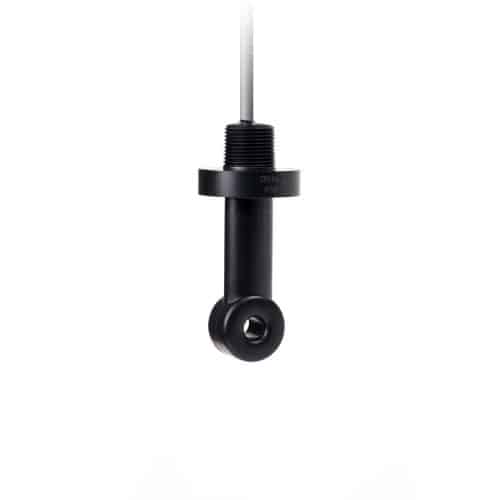
For applications involving high conductivity or harsh environments.
The key parts of a toroidal sensor are the two toroidal coils. These coils are housed inside of an inert plastic case and, therefore never touch the surrounding solution. It’s physically impossible for the sensor surface to become fouled, coated, or contaminated, which is a common challenge for contacting sensors. However, note that the center bore must remain clear so that the solution can flow through.
Polarization occurs at current electrodes present in contacting conductivity sensors. Current electrodes, as their name suggests, require current flow to measure conductivity. In solutions with high conductivity, the current must increase to measure at the same voltage level, which causes ions to cluster around the electrode. This cluster of ions is called an ion cloud and causes conductivity readings to appear lower than they truly are.
Toroidal sensors measure conductivity via electric fields, not electrodes (this is why toroidal sensors may also be called “electrodeless” sensors). Therefore, toroidal sensors do not cause polarization and yield more accurate measurements in high conductivity applications.
Due to their reduced maintenance requirements, a toroidal sensor used in a high conductivity environment will be more cost-effective than a contacting sensor over-time, despite posing a higher upfront cost.

| Model Number | Description | Price |
|---|---|---|
| TCS2000/P1K/20/TL | Toroidal Cond Sensor, PP, P1K, 20ft, TL | $0.00 |
| TCS3000 | Toroidal Cond Sensor, PPO | $0.00 |
| TCS3020 | Toroidal Cond Sensor, PPO | $0.00 |
| TCS3020/P1K/20/TL | Toroidal Cond Sensor, PPO, P1K, 20ft, TL | $0.00 |